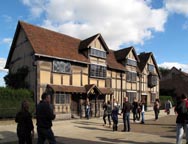Shakespeare’s Birthplace - Large
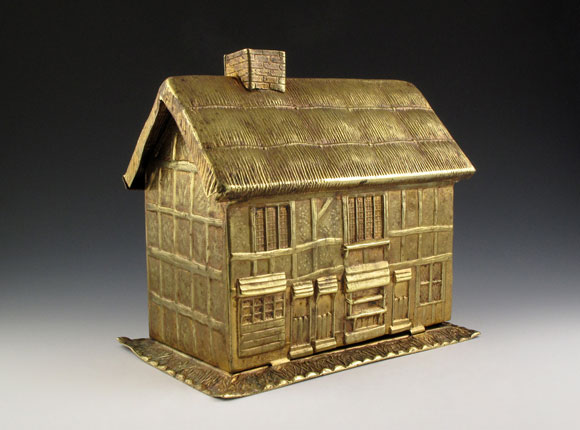
Needle Case
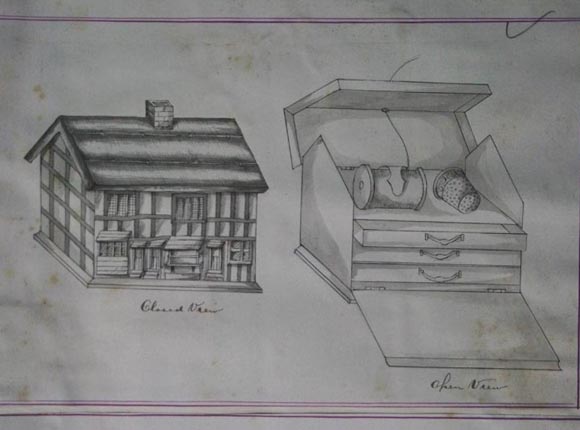
Design Representation
Design Details
Needle Case Type: |
Figural |
Patent/Registered to: |
William Avery & Son - Redditch |
Patent/Design Representation #: |
Ornamental Class 1: Metal: #274362 |
Patent/Design Registration Date: |
July 11, 1873 |
Location of Patent/Design Registration: |
The National Archives (TNA) - Kew, UK |
Reference #:
|
TNA Representation - BT 43/34/274362
TNA Register - BT 44/3/274362 |
Dimensions: |
8.75 x 5.5 x 7.6 |
Material: |
Brass |
Name Variations: |
W. Avery & Son - Redditch |
Other Variations: |
Shakespeare's Birthplace - Small |
Additional Photographs
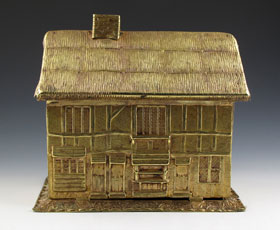
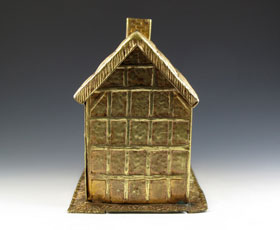
Front and side views
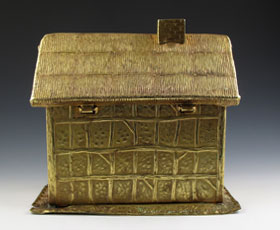
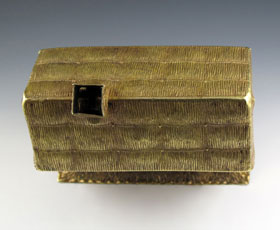
Back and top views
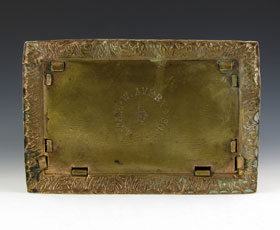
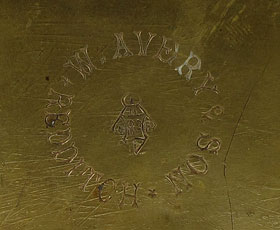
Bottom and signature detail
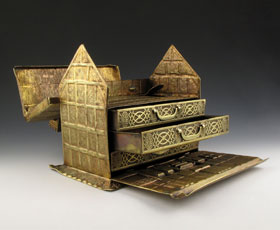
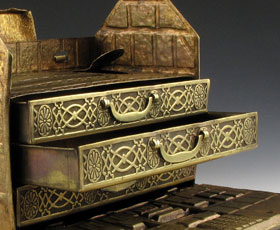
Interior with drawers and drawer detail
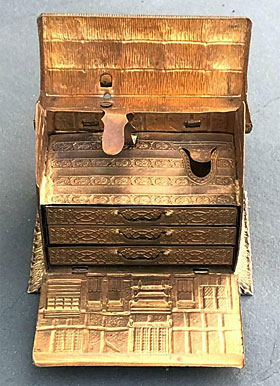
Interior with drawers and top detail
Facts
Shakespeare's Birthplace is a major tourist attraction located in Stratford-upon-Avon, UK. This half-timbered house is where the
English poet and playwright William Shakespeare was born in 1564 and where he spent his youth.
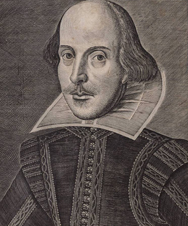
History
Shakespeare’s Birthplace was built in the 16th century. The original structure was divided into two sections; one part was the
family home and the other was the fathers’ glove making workshop. When Shakespeare inherited the property after his father’s death,
he leased it to others since he had another home in Stratford. Over time one section of the birthplace was converted into an inn and
substantial changes were made. Later the building was sold to a butcher and by the mid 19th century it had fallen into
disrepair. It was purchased in 1847 by the UK government as a memorial to Shakespeare after the American showman and entertainer P.
T. Barnum suggested it be dismantled and shipped to the U.S.A. The drawing below shows the building as it appeared in 1847.
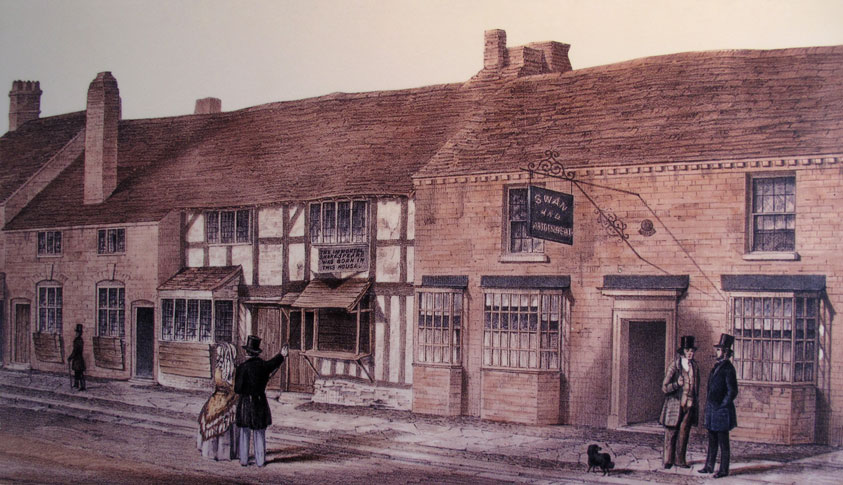
Location
When restoration began in 1857, the birthplace was part of a block of row houses and businesses, however it was decided that the other
structures should be removed in order to prevent the possibility of fire spreading from one building to the next. Restoration was
based on a drawing of the building from the 17th century and was completed around 1864. Therefore, the birthplace one sees today on
Henley Street looks like it did when Shakespeare was born there. In the 1980’s Henley Street was converted to a pedestrian zone due
to the large number of tourists that flock to the area making it impossible to photograph the building without people in front of it.
